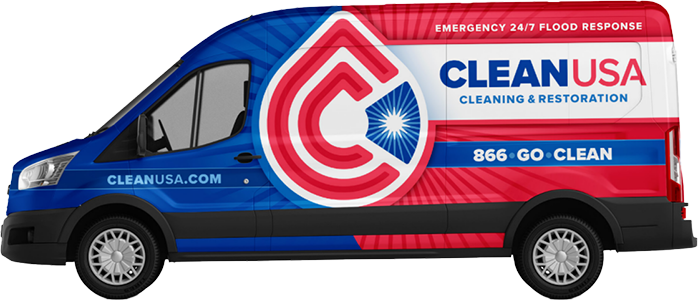Ever wondered what kind of damage storms usually cause? The aftermath can be different, but knowing the most common damage is key. It helps with quick repair and getting ready for future storms.
Storms can cause many types of damage. Data from the National Oceanic and Atmospheric Administration (NOAA) and insurance reports show which ones hit our homes and businesses the hardest. Knowing this is important for fast damage assessment and protecting your property.
Introduction to Storm Damage
Storm damage is caused by natural weather events. It affects homes and businesses, requiring quick action and resources for repair. Different storms, like hurricanes and tornadoes, have their own ways of causing damage.
The cost of these disasters is huge, often in the billions. Damage to property, disruption of businesses, and emergency response costs are heavy. Families also face emotional challenges, like losing homes and valuables.
Many types of storms cause damage. Hurricanes hit coastal areas hard with strong winds and rain. Tornadoes can destroy buildings in seconds. Thunderstorms and winter storms also cause flooding and damage.
Climate change makes storms worse. Warmer oceans lead to stronger hurricanes. Changing weather patterns bring unpredictable storms. This makes storm preparedness even more important.
Emergency services, like FEMA, focus on quick help after storms. They deal with big damage and help communities recover. Their stories show how important being ready and acting fast is.
Wind Damage from Storms
Wind damage from storms is a big worry for homeowners in the United States. High winds can weaken a home’s structure. This can cause roof damage, broken windows, and siding to be displaced. Even strong buildings can be damaged by the constant force of the wind.
Studies show how severe weather can destroy homes. For example, Hurricane Irma in 2017 caused a lot of roof damage in Florida. Many homes needed emergency repairs to fix water leaks and structural problems.
It’s important to prevent storm damage. One way is to retrofit homes with hurricane straps and bracing. This makes the home stronger. Also, using reinforced doors and shatter-resistant windows can help protect against wind.
Common wind damage includes missing shingles, torn-off roofing, damaged gutters, and broken windows. Roof damage is often reported after a storm. This shows the need for regular maintenance and quick repairs.
Storms like hurricanes, tornadoes, and thunderstorms cause different types of wind damage. Tornadoes have strong, localized winds, while hurricanes have wide-reaching high winds. Knowing these patterns helps in creating better ways to prevent storm damage.
Water and Flood Damage
Water and flood damage are big problems after storms, especially near the coast or in low-lying areas. Flooding can break down drainage systems, causing harm to building foundations and infrastructure. It’s important to fix flood damage quickly to stop it from getting worse.
Being ready for flooding is crucial. Homeowners should get flood insurance to help pay for water damage repairs. Having the right insurance gives you peace of mind when disaster strikes.
After a flood, quick action is key to reduce losses. Here are some steps to take:
- Remove standing water to stop mold from growing.
- Use dehumidifiers and fans to dry out wet areas.
- Check for structural damage before going back inside.
- Take photos of all damage for insurance claims.
Floods are happening more often, especially in cities where buildings have grown faster than roads and sewers. This shows we need better ways to fix flood damage and protect our communities.
Hail Damage to Structures
Hailstorms can cause a lot of damage to buildings, cars, and outdoor items. Hailstones can be different sizes, leading to dents, cracks, and even holes. Roofs, especially, need quick protection from hail to avoid leaks and more damage.
Hailstorms cost a lot of money. Insurance says hail damage costs billions in the U.S. every year. Cars are especially hit hard, leading to expensive repairs and claims.
- Material and Design Innovation: Some roofs, like those with impact-resistant shingles, can better withstand hail. Cars are also getting stronger to resist hail damage.
- Cutting-Edge Technologies: New materials and technologies, like hail-resistant composites, are being made. They help protect roofs and buildings from hail damage.
Big hailstorms, like the one in Dallas in 2017, show how hard it is to fix damage. That storm caused over $1 billion in damage, making people rethink how to protect buildings.
In short, hailstorms are a big problem for buildings and cars. We need better ways to prevent damage and fix it when it happens. Investing in strong materials and new technologies is key to dealing with hailstorms.
What is the most common storm damage?
To find out the most common storm damage, we need to look at many sources. The Insurance Information Institute gives us key storm impact statistics. These show us which damages happen most often and how much they cost.
Wind damage is a big problem, hurting homes and businesses a lot. It leads to a lot of property damage claims. This is a big worry for homeowners and insurance companies.
Flood and water damage are also big issues, especially in places that get a lot of rain or hurricanes. These areas see more insurance claims because of flooding damage. Coastal states, like those on the Gulf and Atlantic, are especially at risk.
Looking at storm damage by region shows big differences. For example, hail damage is more common in the Midwest. But the Southeast faces more wind and water damage. This shows why it’s key to be ready in different areas.
The effects of storm damage are huge, both socially and economically. Repair costs and disruptions to daily life are hard on families and businesses. So, it’s crucial to understand and tackle these common storm damages.
It’s important for homeowners and property owners to take steps to prevent damage. They should make roofs stronger, install storm shutters, and have good drainage. These actions can help lower the chance of damage claims and show the value of being ready for storms.
Impact of Lightning Strikes
Lightning strikes are a big threat during storms. They can start fires that spread quickly, harming buildings and nature. Lightning also causes power surges that can damage electrical systems and appliances.
It’s very important to have good lightning protection systems, especially in storm-prone areas. These systems help direct lightning energy safely into the ground. This reduces the chance of fires and damage to electrical systems.
Lightning strikes are more likely during intense storms, making the risks higher. It’s key to understand and prepare for these dangers. Many fires caused by lightning have led to big restoration efforts and rebuilding programs.
Experts say it’s smart to protect electronics and electrical systems during storms. Turning off sensitive devices, using surge protectors, and having good lightning protection systems are good steps. They help keep things safe and prevent big problems.
Conclusion
Understanding and preparing for storm damage is key. Wind, water, hail, and lightning strikes can be very damaging. Good storm safety tips and disaster plans help protect life and property.
Knowing the storm threats in your area helps prevent damage. This focused approach reduces the long-term effects of storms.
Property owners should have detailed disaster plans and know reliable restoration services such as Clean USA Cleaning & Restoration. This quickens recovery and lessens losses. Community and government support are also crucial for recovery efforts.
Using modern technology and proactive measures can lessen storm damage. Having a solid plan and access to restoration services helps you face storms with confidence. It’s not just about surviving; it’s about coming out stronger and better prepared.




